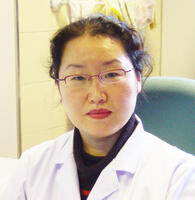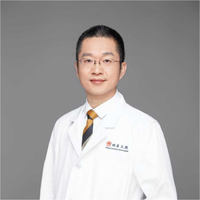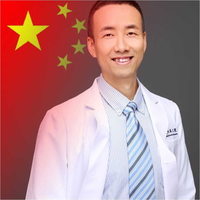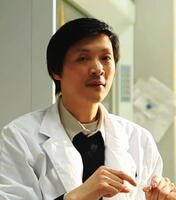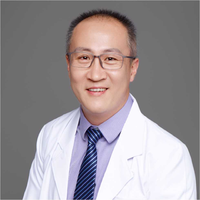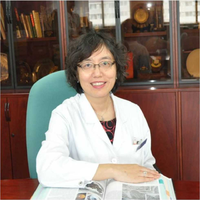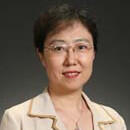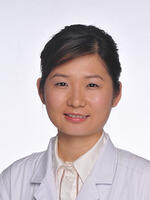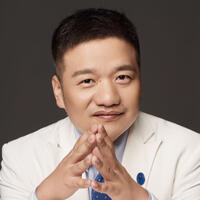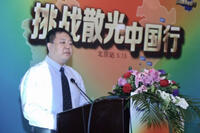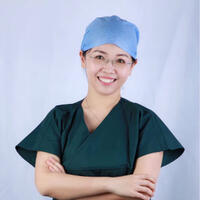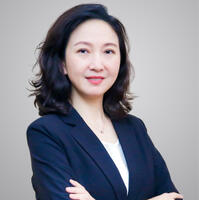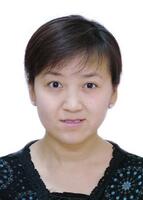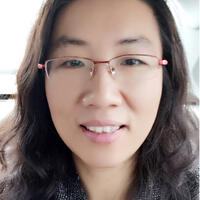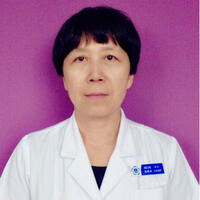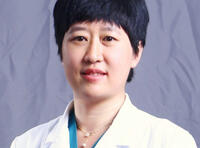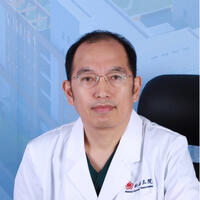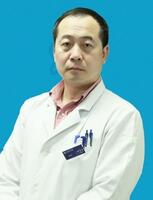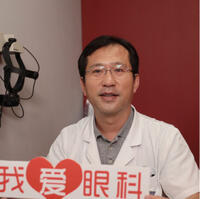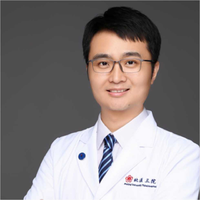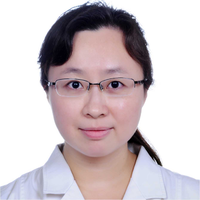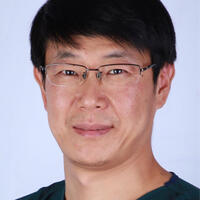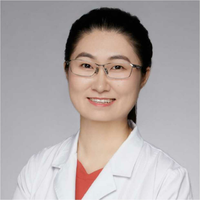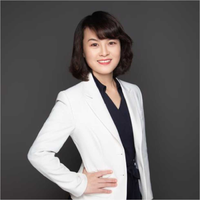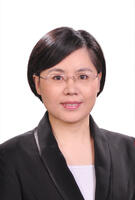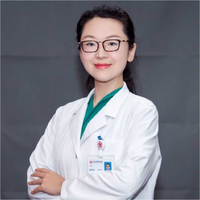科室介紹
北京大學(xué)第三醫(yī)院眼科創(chuàng)立于1958年����,由著名眼科專家李鳳鳴教授率張惠蓉����、趙光喜、朱秀安等老一輩眼科專家�,在醫(yī)、教���、研方面全方位發(fā)展���,躋身于我國(guó)眼科先進(jìn)行列。李鳳鳴教授主編的《眼科全書(shū)》是我國(guó)第一部眼科大型專業(yè)性學(xué)術(shù)著作�����,榮獲1998年衛(wèi)生部科技成果一等獎(jiǎng)。
在三院眼科基礎(chǔ)之上����,北京大學(xué)眼科中心于2001年10月成立,建筑面積10,000m2�;集眼科臨床、教學(xué)和科研于一體����,為國(guó)家重點(diǎn)學(xué)科、北京市重點(diǎn)實(shí)驗(yàn)室����、國(guó)家臨床藥理試驗(yàn)基地。眼科中心由美國(guó)約翰霍普金斯大學(xué)曹安民教授擔(dān)任首任主任����, 2010年4月-2014年9月,我國(guó)著名眼底病專家馬志中教授繼任主任��,王薇教授�、郝燕生教授任副主任���。2014年10月起���,由王薇教授擔(dān)任主任��,洪晶教授����、王常觀副主任醫(yī)師擔(dān)任副主任����。2018年8月后, 洪晶副主任主持工作并分管科研工作�����,王常觀主任醫(yī)師���、陳躍國(guó)教授分別擔(dān)任醫(yī)療副主任及教學(xué)副主任�。
北京大學(xué)第三醫(yī)院眼科中心重視人才戰(zhàn)略和梯隊(duì)建設(shè)���,下設(shè)11個(gè)亞學(xué)科�����,分別與國(guó)際眼科亞科相對(duì)應(yīng)�,即:玻璃體視網(wǎng)膜科、白內(nèi)障與老年眼病科�����、角膜科���、青光眼科�、準(zhǔn)分子激光科���、斜視與小兒眼科�、眼底病內(nèi)科�����、眼整形美容科����、眼外傷科、干眼病科和神經(jīng)眼科��。從全國(guó)招聘眼科著名教授�、一流專家擔(dān)任亞學(xué)科主任,在自主創(chuàng)新的平臺(tái)上組成眼科中心飛速發(fā)展的骨干力量���。
眼科中心設(shè)有病床80張����,日門診量逾千人次����,年手術(shù)量20,000例。外省病人轉(zhuǎn)診比例由2001年的5%增長(zhǎng)到2010年的34%以上�����,表明我中心的診療實(shí)力在全國(guó)眼病患者心目中的影響力日益突顯?�,F(xiàn)有專業(yè)醫(yī)師61人�����,具博士學(xué)位者超過(guò)80%����,高級(jí)職稱專業(yè)人員42人、博士生導(dǎo)師7人�,碩士生導(dǎo)師9人。中心成立至今培養(yǎng)博士后3名�����,博士生80名,碩士生63名��,進(jìn)修醫(yī)300余名�����。眼科中心擁有世界最先進(jìn)的眼科設(shè)備及眼科醫(yī)療�����、教學(xué)和科研平臺(tái)���,躋身于國(guó)內(nèi)Top Ten最主要眼科機(jī)構(gòu)之一���。
位于眼科中心大樓六、七層的眼科研究所�,占地1,125m2。擁有激光共聚焦顯微鏡�、超高速冷凍離心機(jī)、視覺(jué)電生理儀��、熒光顯微鏡及照相系統(tǒng)、凝膠成像系統(tǒng)��、超薄冰凍切片機(jī)�����、梯度PCR儀等先進(jìn)實(shí)驗(yàn)設(shè)備和實(shí)驗(yàn)平臺(tái)�。擁有病理研究室�、分子生物學(xué)實(shí)驗(yàn)室、眼庫(kù)��、免疫實(shí)驗(yàn)室����、干細(xì)胞實(shí)驗(yàn)室、超微結(jié)構(gòu)實(shí)驗(yàn)室�����,以及Dry Lab和Wet Lab兩個(gè)教學(xué)實(shí)驗(yàn)室�,是功能強(qiáng)大的眼科基礎(chǔ)研究平臺(tái),是北京市唯一具備臨床病毒檢驗(yàn)資質(zhì)的眼科實(shí)驗(yàn)室����。眼科中心秉承北京大學(xué)醫(yī)療機(jī)構(gòu)的特點(diǎn),十分重視科研工作���,2010年至今在國(guó)外權(quán)威眼科雜志共發(fā)表122篇SCI論文����,在研課題基金包括國(guó)家自然科學(xué)基金、科技部“973”課題基金��、北京市自然科學(xué)基金�、教育部博士點(diǎn)基金、北京市科委基金��、教育部新教師基金等��,基金總數(shù)逾千萬(wàn)�����。
北京大學(xué)第三醫(yī)院眼科中心環(huán)境幽雅����、溫馨,服務(wù)熱情�����、周到,其獨(dú)具匠心的醫(yī)療空間設(shè)置�����,令人耳目一新����,充分體現(xiàn)人文關(guān)懷的整體設(shè)計(jì),曾被媒體稱之為“彩色的眼科醫(yī)院”�。中心全體醫(yī)護(hù)人員致力于中國(guó)眼科事業(yè)的發(fā)展����,愿意為全國(guó)防盲治盲工作貢獻(xiàn)力量,并努力使之成為國(guó)際著名的眼科中心�。
Peking University Eye Center, located in Peking University Third Hospital Eye Center Building, was first built in October, 2001 on the basis of Ophthalmology Department of Peking University Third Hospital which established in 1958. With a total construction area of 10,000m2, Peking University Eye Center is one of the National Key Disciplines which integrates ophthalmology clinic, education and science research.Professor Mark Tso from Johns Hopkins University was the first director of Eye Center.
Peking University Eye Center has 9 branches: virectomy retina, cataract, ocular trauma & intraocular lens, corneal diseases, glaucoma, optometry, pediatric ophthalmology, medical retinal diseases and oculoplastic surgery.We have absorbed a large group of renowned Chinese ophthalmologists to join us.
Peking University Eye Center has 80 beds with over 1000 daily outpatients’ visits and a year operation quantity of 20,000.The ratio of patients from other cities of the nation increased from 14% in 2001 to 50% in 2015, which marks the increasing nationwide influence of Peking University Eye Center’s.6 doctoral supervisors and 9 master’s supervisors have trained 3 post doctors, 80 doctors, 63 masters and over 300 advanced study doctors.
Peking University Eye Center established Office of Prevention & Treatment of Blindness, National Clinical Pharmacology Laboratory, Peking University Diabetic Eye Disease Center, National Eye Injury Vitrectomy Database, and operated an average amount of 3000 cataract surgeries for Health Express Program.We have built good reputation at the diagnosis of difficult cases in terms of etiology, pathology and genetics.
Peking University Eye Center attaches great importance to scientific researches.Since 2001, over 100 SCI articles are published.On-going research projects include National Natural Science Fund, Chinese Science and Technology Ministry “973” project, Chinese Education Ministry “211” project, Beijing Natural Science Fund, Chinese Education Ministry Doctoral Program, etc.
Equipped with world advanced ophthalmic facilities and machines, Peking University Eye Center is one of the Top Ten Ophthalmology Departments in China.
